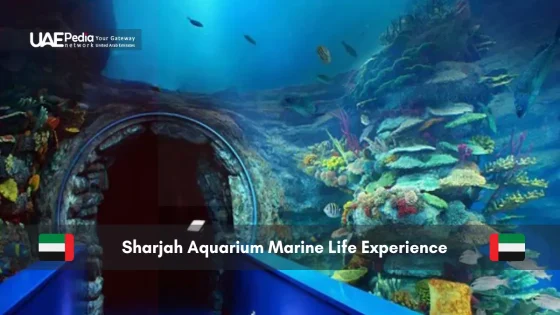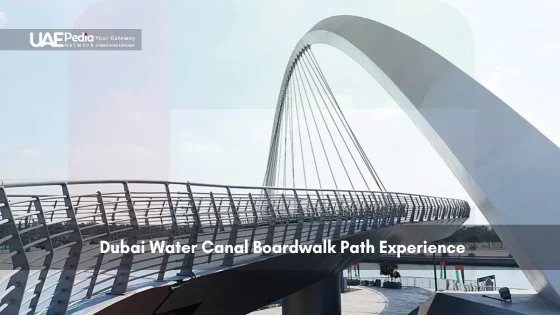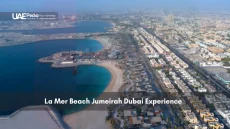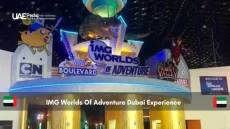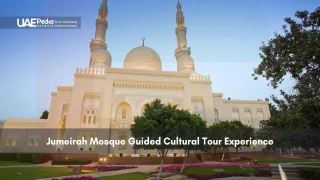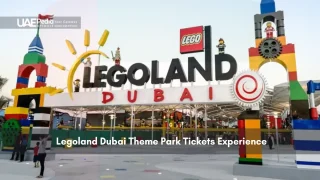What if a single coin could tell a thousand stories? Tucked within the wind-towered lanes of a historic district lies a cultural gem most visitors overlook—a space where metal discs become time machines. Founded in 2004, this intimate venue holds 470 meticulously preserved specimens spanning empires, trade routes, and centuries.
You’ll find it nestled in the heart of Bur Dubai, where sand-colored walls and carved wooden doors blend seamlessly with the Fahidi Historical neighborhood’s timeless charm. But step inside, and touchscreens transform age-old artifacts into interactive journeys—trace a dirham’s path across silk roads or zoom in on intricate calligraphy etched by forgotten hands.
This isn’t just about glass cases and labels. It’s about feeling the weight of a Roman denarius, spotting Bedouin symbols on silver pieces, and understanding how currencies shaped the United Arab region’s identity. The space feels like a shared secret among history lovers—a quiet contrast to the city’s glittering skyscrapers.
Why start your exploration here?
- Uncover a rare collection bridging ancient Lydia to modern UAE
- Engage with exhibits designed for curious minds, not academics
- Locate it easily near iconic cultural sites (no maze-like halls)
Discovering the Dubai Al Fahidi Coin Museum
Step into a world where money isn’t just currency—it’s a chronicle of civilizations. This institution, established in 2004, breathes life into eight carefully curated rooms filled with metallic storytellers. Each piece reveals how trade routes, empires, and cultural exchanges shaped the region’s identity.
From Sandstone Walls to Digital Explorations
Nestled within a historic district’s winding alleys, the venue blends traditional architecture with modern tech. Touchscreens let you zoom in on 7th-century Arabic inscriptions or compare Byzantine minting techniques with Ottoman designs. “You’re not just looking at coins,” one visitor remarked. “You’re decoding the DNA of ancient economies.”
Hands-On History Lessons
The collection spans silver Bedouin dirhams to gold Mughal mohurs, each labeled with mint dates and metallurgical details. Replica scales and stamping tools invite tactile learning—feel the weight of a merchant’s purse or trace your finger over reproduction trade maps. Best part? Multi-language displays (Arabic/English) and free entry make this knowledge accessible to all.
Knowledgeable guides transform dates into dramas. They’ll show you how a 14th-century silver piece influenced regional trade alliances or why certain symbols reappear across eras. It’s like having a time-traveling companion whispering, “Look closer—this changed everything.”
Exploring the Rich Heritage of the Al Fahidi Neighborhood
This isn’t just a historic area—it’s a vibrant tapestry where culture pulses through coral-stone walls and shaded courtyards. We’re talking about a living museum where every sand-colored alley holds stories older than skyscrapers.
Traditional Architecture and Wind Towers
Those iconic wind towers aren’t just pretty decorations. They’re ancient climate control—designed to catch breezes and funnel cool air into homes below. Notice the gypsum carvings and palm-wood lattices? These materials kept interiors bearable long before AC existed.
Stroll past restored merchant houses with their signature barjeel towers. Their geometric patterns reveal regional trade influences—Persian motifs beside Indian woodwork. You’ll swear the walls still hold whispers of 19th-century tea traders haggling over spices.
Cultural Landmarks and Local Markets
Turn any corner, and you’ll find artisans etching Arabic calligraphy or weaving palm fronds into baskets. The textile souq nearby bursts with embroidered abayas, while coffee shops serve cardamom-infused gahwa in tiny handleless cups.
Don’t miss these neighborhood gems:
- The Dubai Fort (just a 7-minute walk), where exhibits unpack the city’s pearl-diving past
- Hidden art galleries hosting Emirati painters in renovated wind-tower homes
- Friday morning markets where locals trade silver jewelry and hand-dyed fabrics
Pro tip: Arrive early. Morning light paints the Bur Dubai lanes gold—perfect for photos without crowds. Later, watch how sunset transforms the area into a honey-hued dreamscape straight from Arabian Nights.
Immersive Exhibits and Interactive Experiences
Imagine holding history in your palm—except this history talks back. The venue’s tech-forward approach turns static displays into living conversations. Touch a screen, and watch 3D models of ancient currencies spin like tiny planets, revealing hidden symbols and wear patterns from centuries of trade.
Digital Displays and Detailed Coin Information
Glide your finger across tablets to magnify 2,000-year-old inscriptions. “These aren’t just labels—they’re cheat codes for understanding empires,” laughed one teen visitor. Interactive maps trace how Phoenician shekels influenced regional commerce, while timelines connect coin designs to political shifts.
| Interface Type | Features | Time Period Covered |
|---|---|---|
| Rotating Displays | 360° coin views + metallurgy data | 6th century BCE–18th century CE |
| Trade Route Maps | Animated cargo movements | Silk Road era |
| Minting Stations | Virtual stamping simulations | Byzantine to Ottoman |
Replica Artifacts and Touch Screen Tours
Wooden replicas—some larger than dinner plates—let you trace intricate calligraphy with your fingertips. Feeling the grooves of a 10th-century dinar’s edge? That’s intentional. “We want visitors to experience craftsmanship, not just see it,” explains a curator.
Tech-savvy travelers appreciate intuitive menus offering bite-sized insights. Swipe left for “Materials & Methods,” right for “Historical Impact.” Each room focuses on a specific era—like walking through chapters of a tactile textbook where every exhibit whispers, “Go deeper.”
Pro tip: Use the AR feature on your phone. Point it at certain displays to watch ancient market scenes unfold around you—no time machine required.
Plan Your Visit: Tips for an Unforgettable Tour
Ready to step into a time capsule of metallic history? Let’s map your journey through centuries—and modern logistics—so you spend less time planning and more time exploring.
Opening Hours, Entry Details, and Parking
The doors swing open Saturday–Thursday (8:30 AM–3:30 PM), with Fridays reserved for cultural observances. No tickets needed—entry’s free, though donations keep those touchscreens buzzing. Pro tip: Arrive by 10 AM to beat both crowds and midday heat.
Parking? Look for blue-and-white “Public Parking” signs near the district’s edge. Spaces fill fast, so consider ride-shares or the RTA app’s real-time spot finder. Guided tours run at 11 AM and 2 PM—ask about their “Eras Uncovered” walkthrough linking Roman denarii to Ottoman gold.
Nearby Restaurants and Transportation Options
Fuel up at the Arabian Tea House Café—their date pancakes and saffron-infused karak chai hit the spot. Prefer quick bites? Artisan bakeries dot the lanes with cardamom-spiced chebab pancakes.
| Transport Mode | Details | Best For |
|---|---|---|
| Metro | Green Line to Sharaf DG Station (8-min walk) | Budget travelers |
| Taxis | 24/7 availability; mention “Fahidi Museums” | Door-to-door ease |
| Car Rentals | Compare rates on UAE-wide apps like eZhire | Multi-stop days |
After marveling at ancient currencies, dive into Bur Dubai’s living culture. Weave through textile souks fragrant with oud, or snap photos of wind towers glowing at golden hour. As one recent visitor put it: “The real exhibit? The neighborhood itself—every corner’s a story.”
Closing Reflections on Dubai’s Cultural Journey
Every artifact whispers secrets of empires long gone. The immersive experience here bridges dusty trade routes and digital touchscreens, proving history isn’t locked behind glass—it’s a time-traveling adventure you can hold in your hands.
Wandering through rooms filled with centuries-old currencies feels like flipping through a global passport. High-def displays decode Bedouin symbols while replica scales let you weigh the past—literally. It’s a living history lesson where ancient dirhams share stories of spice caravans and royal treasuries.
This cultural gem mirrors the city’s spirit: deeply rooted yet futuristically bold. Beyond its walls, the historic neighborhood pulses with life—artisan markets, wind-tower architecture, and cafes serving cardamom coffee. Together, they paint a portrait of a nation honoring its heritage while racing toward tomorrow.
Got the travel bug? Let this be your starting point. Share discoveries from the Arab Emirates’ bustling souks or serene deserts. Every stamped metal disc, every sunbaked alley—they’re threads in a tapestry connecting countries and eras.
Final thought? True wealth isn’t counted in gold. It’s measured in stories preserved, shared, and retold. Here, history’s currency never loses value.
No, visiting this cultural gem is free! You can explore rare coins and artifacts from the region’s trade history without spending a Dirham. Just bring your curiosity—and maybe a hat for the short walk through Al Fahidi’s sunlit lanes.
Mornings right at opening (8 AM) or weekdays after 3 PM are quieter. Combine your visit with a stroll through the Al Fahidi Historical Neighbourhood before lunch, when tour groups thin out. Pro tip: Fridays here start later due to cultural norms, so plan around midday.
Absolutely! Snap away—the interactive displays and ancient currencies are photo-friendly. Just avoid flash near delicate pieces like 7th-century Umayyad coins. Share your favorites with #UAECoinStories to join the heritage conversation.
While formal tours aren’t offered daily, touchscreen kiosks provide rich context. For deeper insights, check the museum’s social media for occasional curator-led walks. Nearby cultural spots like the Dubai Museum (3 minutes away) often have scheduled tours you can piggyback on.
Limited street parking exists in Bur Dubai, but we recommend the Al Ghubaiba Metro Station (10-minute walk). Ride the metro’s Green Line, then wander past wind towers and art galleries—it’s part of the adventure!
Most explorers spend 45-60 minutes here. Pair it with Al Seef’s markets or a karak chai break at nearby Arabian Tea House for a half-day cultural deep dive. History buffs might linger over Abbasid-era silver dirhams!
Yes, ramps and elevators connect all floors. Compact spaces in the 1898 fort require slight maneuvering, but staff gladly assist. Contact +971 4 515 5000 ahead for smooth access to upper-level interactive screens.
Not on-site, but the Textile Souq (5 minutes away) sells handcrafted keepsakes. For authentic replicas, check the Sharjah Archaeology Museum’s online shop—they deliver across the Emirates!

